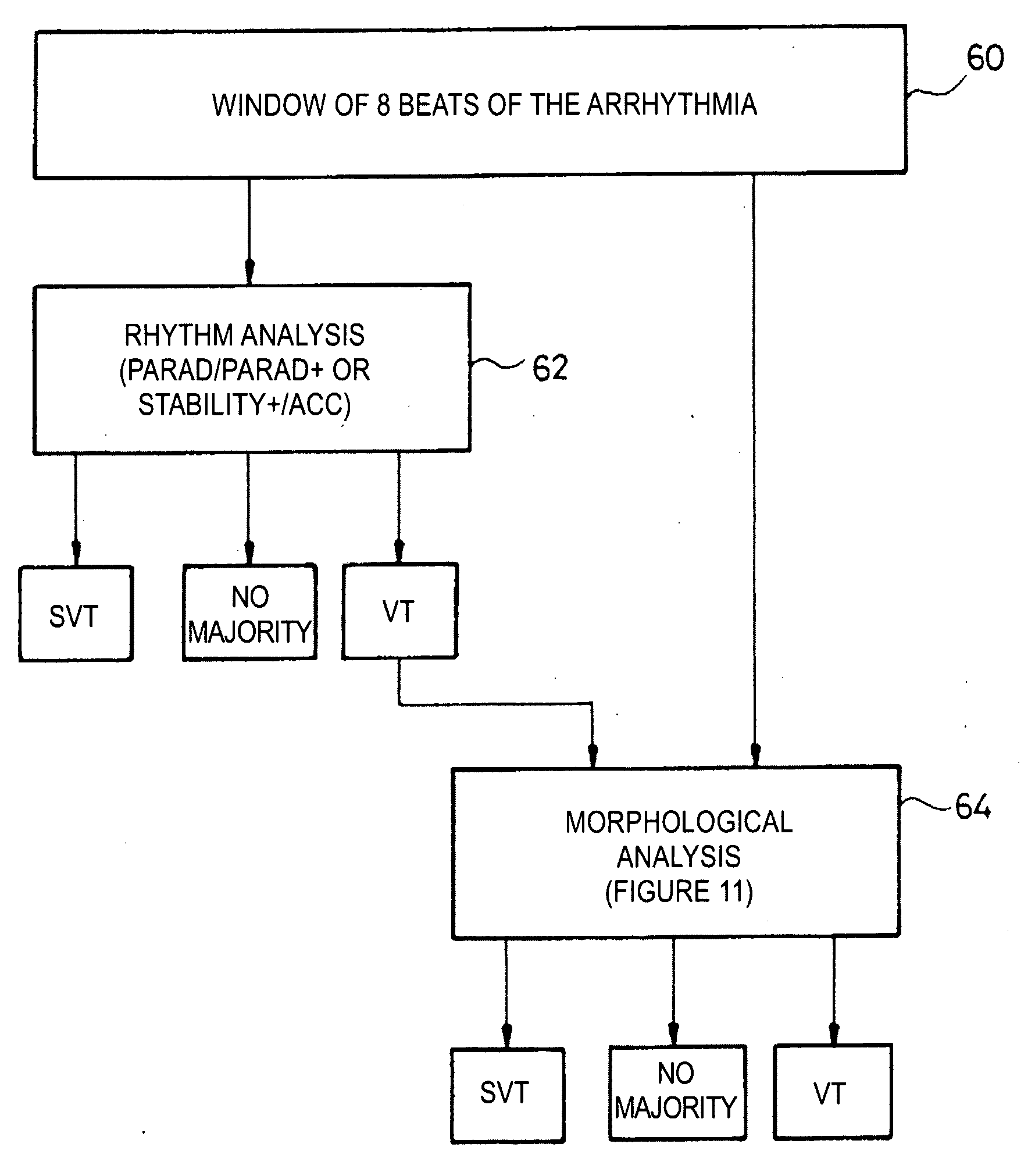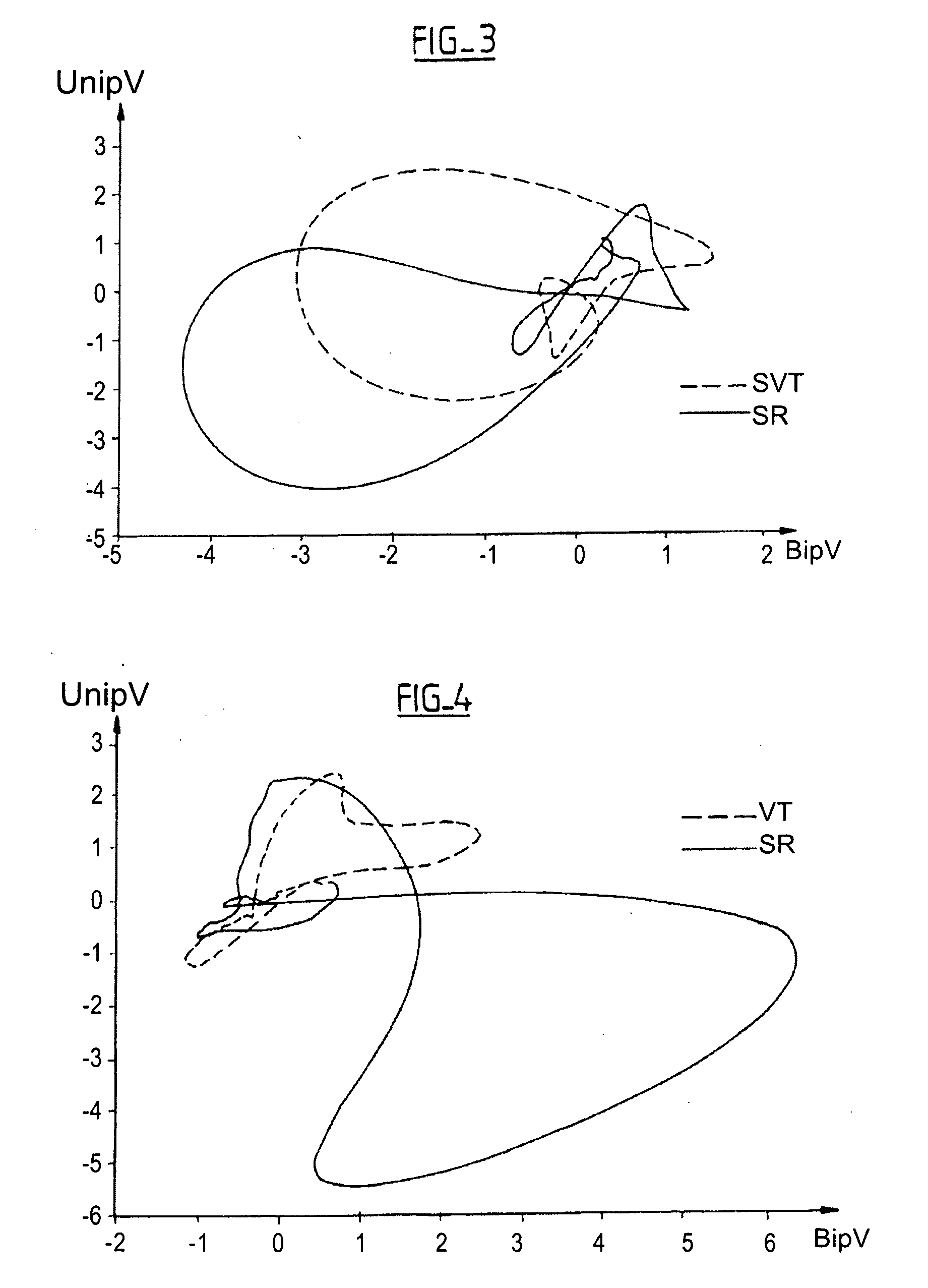Discriminating between tachycardias of ventricular origin and supra entricular origin, methods and apparatus
- Summary
- Abstract
- Description
- Claims
- Application Information
AI Technical Summary
Benefits of technology
Problems solved by technology
Method used
Image
Examples
first embodiment
of the Present Invention
[0063]An analysis method and apparatus in accordance with a first embodiment of the present invention, will now be described with reference to FIGS. 5 to 14. In this embodiment, after each detection of a bipolar signal depolarization peak BipV (corresponding to a detected R wave), the corresponding beat is isolated by a permanent window WQRS having a duration of several tens of milliseconds centered on the determined depolarization peak, for example, a width window WQRS=80 ms corresponding to 80 points for a sampling frequency of 1000 Hz. This typical 80 ms value allows to appropriately isolate the QRS complex to analyze its morphology, without inducing too much noise around, said noise corresponding to the base line after the end of the QRS.
[0064]The device keeps stored in memory a plurality of successive beats, for example, the last eight beats B1 to B8, as illustrated in FIG. 5, those beats being recorded simultaneously on the ventricular bipolar channel (...
second embodiment
of the Present Invention
[0109]With reference to FIGS. 15 to 18, another embodiment of the present invention is now described. This second embodiment is also based on the analysis and the characterization of the vectogram, but based on other criteria than those described above with respect to the first embodiment (unit tangent vector and weighted and normalized curvature in each point). The considerations related to the possible method for combining rhythm analysis and morphological analysis, described in particular in relation with FIG. 14, are nevertheless applicable to this second embodiment.
[0110]In this second embodiment, the orthonormal basis in which the vectogram UnipV=f (BipV) with be represented is defined by an analysis in principal components (an analysis named “ACP”) from the Sinus Rhythm. This ACP analysis, which is well-known in itself, can be performed for each beat, and it allows for deducing the electrical heart axis, which is an indicator of the general direction o...
PUM
 Login to View More
Login to View More Abstract
Description
Claims
Application Information
 Login to View More
Login to View More - R&D
- Intellectual Property
- Life Sciences
- Materials
- Tech Scout
- Unparalleled Data Quality
- Higher Quality Content
- 60% Fewer Hallucinations
Browse by: Latest US Patents, China's latest patents, Technical Efficacy Thesaurus, Application Domain, Technology Topic, Popular Technical Reports.
© 2025 PatSnap. All rights reserved.Legal|Privacy policy|Modern Slavery Act Transparency Statement|Sitemap|About US| Contact US: help@patsnap.com



